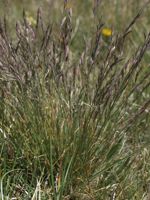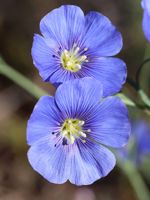Mon-Fri 9am - 5pm Mountain time
Rocky Mountain Fescue vs Blue Flax
Festuca saximontana
Linum lewisii
CUSTOM GROW
NOT AVAILABLE THIS SEASON - MIGHT RETURN
Rocky Mountain Fescue is a native perennial bunchgrass recognized for its fine-textured clumps and adaptability to harsh environments. It grows well in dry, rocky, and nutrient-poor soils and is highly cold-tolerant, making it well-suited to both prairie and alpine habitats. Its fibrous root system contributes to soil stability and helps reduce erosion on slopes and shallow soils.
Widespread across western and northern North America, Rocky Mountain Fescue is an important component of many prairie and alpine ecosystems. It contributes ground cover and organic matter that support soil function, provides cover for small wildlife, and offers moderate forage for grazing animals. Hardy and versatile, it is used in ecological restoration, naturalization, and habitat enhancement projects, particularly in upland and alpine landscapes.
Blue Flax is a native perennial wildflower known for its blue to violet flowers. Each flower lasts just a single day, but new blooms appear continuously, providing weeks of colour. This extended flowering period provides a reliable display from late spring into summer and attracts a variety of pollinators.
They can self-seed readily, so removing spent blooms helps manage their spread. Birds feed on the seeds, and when cooked, they are edible and are described as having a mild, nutty flavour. The plant grows in loose clumps with slender stems and fine foliage. Young plants are leafy, but as they mature, most leaves are shed.
Blue Flax grows well in a wide range of soils, including poor or sandy conditions, and is drought-tolerant once established. The deep root system helps to stabilize soil and prevent erosion. They are well-suited for pollinator gardens, restoration, naturalization, and xeriscaping projects.
Rocky Mountain Fescue Quick Facts
Blue Flax Quick Facts
Toxicity: toxic to some animals, raw seed toxic

